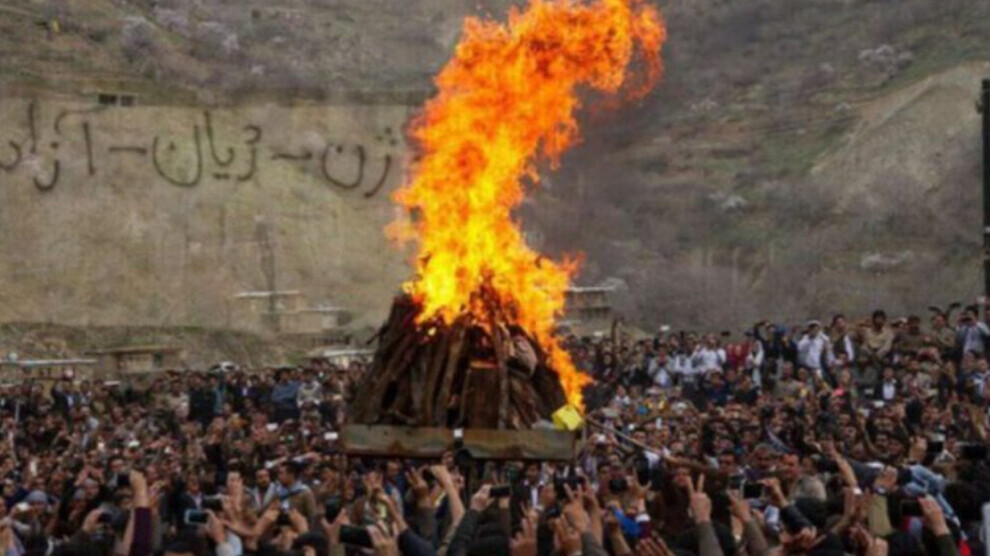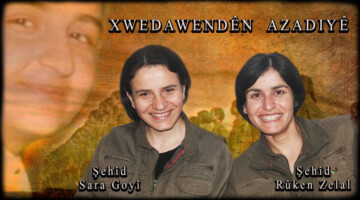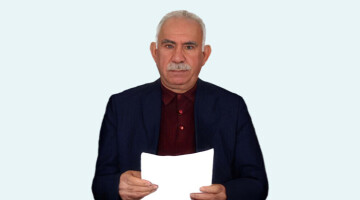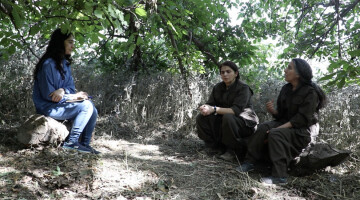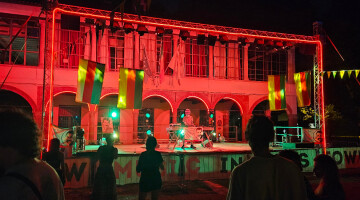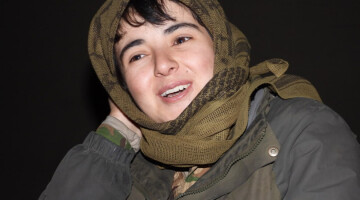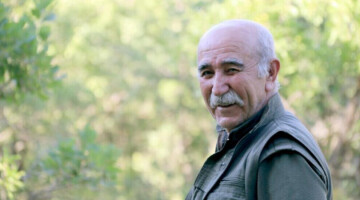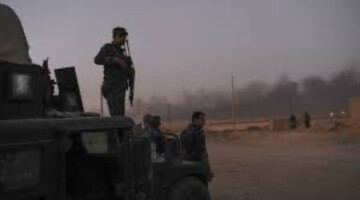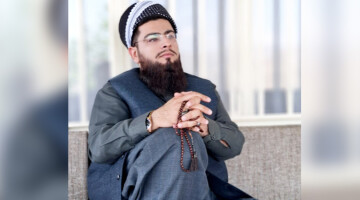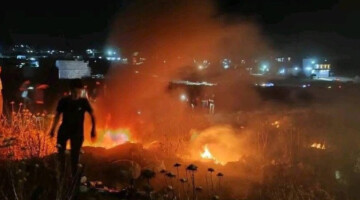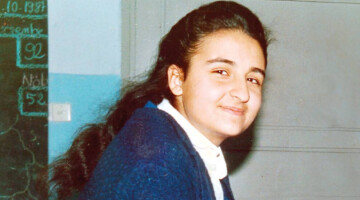22-year-old Kurdish woman Jina Mahsa Amini was detained by the morality police on 13 September 2022 in Tehran on the grounds that she did not cover her head properly. She died in a hospital on 16 September, as a result of the torture she was subjected to. Since then, there has been a popular uprising unprecedented since the revolution of the Islamic Republic of Iran.
The uprising in Iran and Rojhilat, marked by the iconic motto “Jin, Jiyan, Azadi” (Woman, Life, Freedom), continues on Newroz Day, 21 March.
The first Newroz fire in Rojhilat was lit by Amini’s grave in the Aichi Cemetery in Saqiz city. The fire was lit by her father to the accompaniment of songs of resistance.
BACKGROUND
In the Islamic Republic of Iran, "discipline and order" must be strictly observed. To implement this, there is a separate Islamic religious police force, also known as the morality police, which pays particular attention to ensuring that "dress codes" are observed in the country. Recently, the UN Human Rights Office in Geneva noted that these morality police have expanded their patrols in recent months, targeting women who do not wear the Islamic headscarf, the so-called hijab, "according to the rules". This policy has caused society in Rojhilat [the main settlement areas of the Kurds in Iran, which lie in western Iran according to today's nation-state borders and are the epicentre of the nationwide protests] and Iran to boil over since 13 September.
On 13 September, Jina and her brother were on their way from their hometown to Tehran when they were stopped by the morality police. They wanted to arrest Jina because of her "un-Islamic" outfit. Her "un-Islamic" outfit was characterised by the fact that part of her hair was visible under the hijab. She was therefore taken to a police station. After a few hours, Jina fell into a coma and was then taken to hospital, where she ultimately died on 16 September. While the official authorities spoke of "sudden heart problems" or later also of pre-existing conditions, it was clear to the public relatively quickly what must have happened. Jina had already been beaten and tortured by several police officers on the way to the police station and this continued at the station. People knew because thousands of others had been beaten in this way before, because Jina's brother had to witness the first beating himself.
Hospital records leaked by a hacker group and published by Iran International, a media outlet of the Iranian opposition in exile, with CT scans said to be of Jina Mahsa Amini, confirmed the version according to which the young woman died from massive violence to the head. After her death, the Tehran clinic where Amini was treated also wrote in a post on Instagram, which was then deleted, that she was already brain-dead when she was admitted.
The Iranian government immediately tried to cover up what had happened. The police authorities demanded that Jina's parents bury their daughter's body that same night in camera. However, they refused and did not bury her until the next morning in Seqiz, which was the starting point of the popular uprisings in Iran.
On 17 September, the uprisings began in Seqiz, which quickly spread to other towns of Eastern Kurdistan such as Ûrmiye (Urmia), Serdeşt (Sardasht) and Sine (Sanandaj). Young women have dominated these uprisings from the beginning. The two central slogans that have been echoing on the streets of almost all cities in Iran for days are "Jin, Jiyan, Azadî" (Woman, Life, Freedom) and "Bimre dîktator" (Death to the Dictator). At first, the Iranian state desperately tried to sell its version of Jina's death as the truth. They tried to force Jina's father to explain that his daughter was indeed suffering from pre-existing conditions. However, he did not give in to the pressure of the Iranian authorities. The doctors who treated her were also muzzled. They were not allowed to reveal a word about the circumstances of the death to the public. Then those responsible in the state put out the usual fairy tale that the popular uprisings were being directed from abroad. But the people in the country no longer buy that either. Too many people are sentenced to the death penalty in prisons, mostly because they think politically differently from Iran's rulers; too many people disappear without a trace, too many women are tortured daily and the oppression of minorities in Iran is too great.
Several political parties and civil society organisations in Eastern Kurdistan came together in the next step and called for mass protests and a general strike on 19 September. On this day, almost all shops in Eastern Kurdistan remained closed. Most universities and schools also remained empty. Instead, the masses gathered in the streets. With this moment, popular uprisings finally spread throughout the country. In the capital Tehran, as in many other metropolises and smaller cities, people have been taking to the streets. The uprisings started in the Kurdish areas of Iran, but today they are carried out in all parts of the country and by different ethnic groups. Led by women, Kurds, Persians, Arabs, Azerbaijanis and Baluchis are currently fighting side by side against the repressive regime in Tehran.
Fighting is the right keyword here, because the Iranian state allowed the demonstrations to escalate within a very short time, resulting in real street battles in many places. After attempts to ban the demonstrations failed, they tried to beat people off the streets. The "morality police", "riot control police" and sometimes even the military were sent in to bring the situation under control. But the people drove the security forces back. Women tore their hijabs off their heads in public spaces and burned them, as the Yazidis did when they were liberated from the "Islamic State" (ISIS). The Iranian state flag was taken down from poles in many places and pictures of the Iranian leadership were burnt.
Three central demands of the protesters in the popular uprisings are:
- An investigation into the murder of Amini and conviction of the killers
- An end to femicidal policies in Iran
- An end to the Islamic regime in Iran
In recent years, there have been repeated protests in Iran. But the size and spread of the latest uprisings seems much broader. The same is true of the anger of the masses against the regime. International solidarity is also very large. Especially on social media, hundreds of thousands of people exerted pressure and ensured that the uprising of women and the people of Iran in general also finds its place in the mainstream press. Solidarity actions with the protests in Iran have taken place and continue to take place around the world. Even the online activists of "Anonymous" got involved and started "Operation Iran". According to their own information, they were able to take several state websites, the central news platform, the website of the central bank and over 300 surveillance cameras off the net.
Shortly before Iranian President Ebrahim Raisi gave his speech at the United Nations in New York on 21 September, in which he kept quiet about the developments in his own country, the internet was cut off in large parts of Iran and especially in Eastern Kurdistan. First, social media platforms like Instagram and WhatsApp were blocked, then the entire internet was shut down. In this way, the Iranian regime not only tried to stop communication among the protesters, but also to prevent information about the events from reaching the outside world. There are various figures on those killed and wounded.

